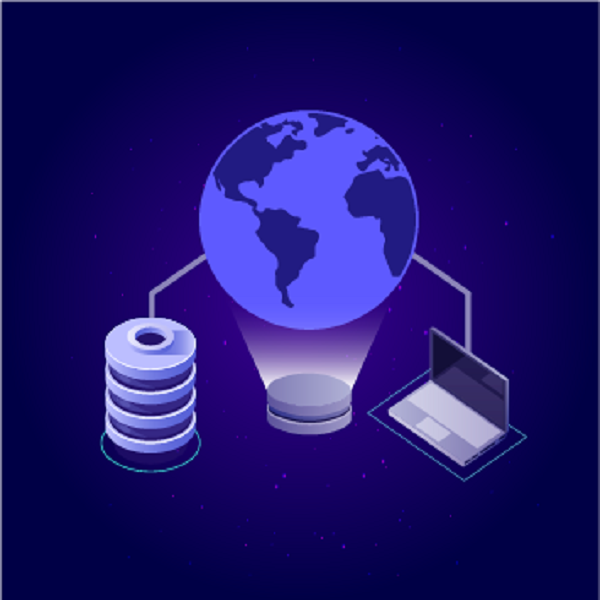Residential Proxies
Allowlisted 200M+ IPs from real ISP. Managed/obtained proxies via dashboard.

Proxies
Residential Proxies
Allowlisted 200M+ IPs from real ISP. Managed/obtained proxies via dashboard.
Residential (Socks5) Proxies
Over 200 million real IPs in 190+ locations,
Unlimited Residential Proxies
Use stable, fast, and furious 700K+ datacenter IPs worldwide.
Static Residential proxies
Long-lasting dedicated proxy, non-rotating residential proxy
Dedicated Datacenter Proxies
Use stable, fast, and furious 700K+ datacenter IPs worldwide.

Web Unblocker
View content as a real user with the help of ABC proxy's dynamic fingerprinting technology.
Proxies
API
Proxy list is generated through an API link and applied to compatible programs after whitelist IP authorization
User+Pass Auth
Create credential freely and use rotating proxies on any device or software without allowlisting IP
Proxy Manager
Manage all proxies using APM interface

Proxies
Residential Proxies
Allowlisted 200M+ IPs from real ISP. Managed/obtained proxies via dashboard.
Starts from
$0.77/ GB
Residential (Socks5) Proxies
Over 200 million real IPs in 190+ locations,
Starts from
$0.045/ IP
Unlimited Residential Proxies
Use stable, fast, and furious 700K+ datacenter IPs worldwide.
Starts from
$79/ Day
Rotating ISP Proxies
ABCProxy's Rotating ISP Proxies guarantee long session time.
Starts from
$0.77/ GB
Static Residential proxies
Long-lasting dedicated proxy, non-rotating residential proxy
Starts from
$5/MONTH
Dedicated Datacenter Proxies
Use stable, fast, and furious 700K+ datacenter IPs worldwide.
Starts from
$4.5/MONTH
Knowledge Base
English
繁體中文
Русский
Indonesia
Português
Español
بالعربية


This article delves into the core drivers of data collection costs, analyzes the barriers to obtaining high-value data, and explains how proxy IP technology can optimize data collection efficiency and cost control.
The underlying logic of data collection costs
The essence of data collection cost differences stems from the scarcity of data itself, the difficulty of technical acquisition, and compliance requirements. High-cost data usually has the following characteristics: it requires complex infrastructure support, involves privacy or security restrictions, relies on multimodal fusion, or exists in a highly dynamic environment. For companies that rely on large-scale data collection (such as e-commerce and social media monitoring platforms), understanding these cost differences is the key to optimizing operations. abcproxy's proxy IP solution helps users reduce the hidden costs caused by IP blocking or anti-crawling mechanisms by providing a stable data acquisition infrastructure.
Cost barriers driven by technological complexity
Distributed systems and real-time processing requirements
Time series data updated at the millisecond level (such as financial market conditions and live interactive data) requires the deployment of a high-throughput stream processing architecture, including distributed systems such as Kafka and Flink. The collection of such data requires not only high-performance server clusters, but also continuous investment in network bandwidth and computing resources.
Challenges of integrating heterogeneous data sources
Cross-platform, multi-format data (such as multimodal data combining text, images, and sensor signals) requires customized analysis tools. The complexity of data cleaning and alignment directly increases labor and computing costs. For example, sentiment analysis of social media content requires processing language, emoticons, and user behavior logs at the same time.
The hidden costs of privacy and security restrictions
Anonymization and encryption technology costs
Data involving personally identifiable information (PII) or biometrics must be processed with differential privacy or homomorphic encryption, which significantly reduces data availability. To compensate for information loss, companies often need to expand the sample size or introduce synthetic data, which doubles the cost.
Geofencing and access restrictions
Data restricted by regional regulations (such as e-commerce prices in a specific country, localized content) needs to be simulated through a proxy IP network to simulate the real user's geographic location. Static ISP proxies and residential proxies can effectively bypass geographic blocking in this scenario, but the procurement cost of high-quality IP resources is high.
Data scarcity and difficulty in obtaining data
The cost of acquiring long-tail distribution data
The collection of low-frequency but high-value events (such as luxury consumption behavior and rare disease cases) relies on long-term monitoring or cross-institutional collaboration. Such data usually requires incentives for user participation (such as paid surveys) or cooperation with third-party data suppliers.
Acquisition loss in dynamic adversarial environments
In scenarios such as advertising verification and public opinion monitoring, the target website's anti-crawler mechanism (such as verification code, behavioral fingerprint analysis) will lead to a decrease in the success rate of collection. Infinite Residential Proxy can reduce the probability of request interception by rotating the real user's IP address, thereby reducing data retry and delay costs.
Long-term investment in infrastructure and maintenance
Hardware deployment and operation and maintenance costs
The collection of physical world data (such as weather sensors and industrial equipment status data) relies on dedicated hardware, which involves equipment procurement, installation and commissioning, and regular maintenance. Equipment at sea or in remote areas also needs to bear high communication costs (such as satellite data transmission).
Building a sustainable data pipeline
Stable data supply requires the design of fault-tolerant mechanisms, including breakpoint resuming, anomaly detection, and automatic expansion and contraction. The data center proxy provides a high-availability IP pool to ensure that the collection task continuity can be maintained when some nodes fail.
How to optimize cost structure with proxy IP technology
Reduce request failure rate: Residential proxies simulate real user behavior and reduce data collection interruptions caused by IP blocking;
Improve collection efficiency: SOCKS5 proxy supports multi-protocol data transmission, which is suitable for scenarios that need to process multiple interfaces such as HTTP/HTTPS/FTP at the same time;
Control resource consumption: Intelligent IP scheduling algorithms balance cost and performance, such as using low-cost data center proxies to execute batch tasks during off-peak hours.
Conclusion
The cost of data collection depends on the triple effects of data type, technical threshold and compliance requirements. Enterprises need to choose the most cost-effective strategy based on their business goals, such as breaking through geographical restrictions through proxy IP networks or using synthetic data to supplement scarce samples.
As a professional proxy IP service provider, abcproxy provides a variety of high-quality proxy IP products, including residential proxy, data center proxy, static ISP proxy, SOCKS5 proxy, unlimited residential proxy, suitable for a variety of application scenarios. If you are looking for a reliable proxy IP service, welcome to visit the abcproxy official website for more details.
Featured Posts
Popular Products
Residential Proxies
Allowlisted 200M+ IPs from real ISP. Managed/obtained proxies via dashboard.
Residential (Socks5) Proxies
Over 200 million real IPs in 190+ locations,
Unlimited Residential Proxies
Use stable, fast, and furious 700K+ datacenter IPs worldwide.
Rotating ISP Proxies
ABCProxy's Rotating ISP Proxies guarantee long session time.
Residential (Socks5) Proxies
Long-lasting dedicated proxy, non-rotating residential proxy
Dedicated Datacenter Proxies
Use stable, fast, and furious 700K+ datacenter IPs worldwide.
Web Unblocker
View content as a real user with the help of ABC proxy's dynamic fingerprinting technology.
Related articles

How do Private Proxy and Wingate improve my network efficiency
This article discusses how Private Proxy and Wingate work together to improve network efficiency, analyzes their technical principles and abcproxy's adaptation solutions, and provides optimization ideas for enterprises and individual users.

How does Instagram IP Address affect account security
What is the relationship between Instagram IP Address and account security? How can proxy IP help optimize operations? This article analyzes the impact of IP address on Instagram and explores abcproxy's solution.